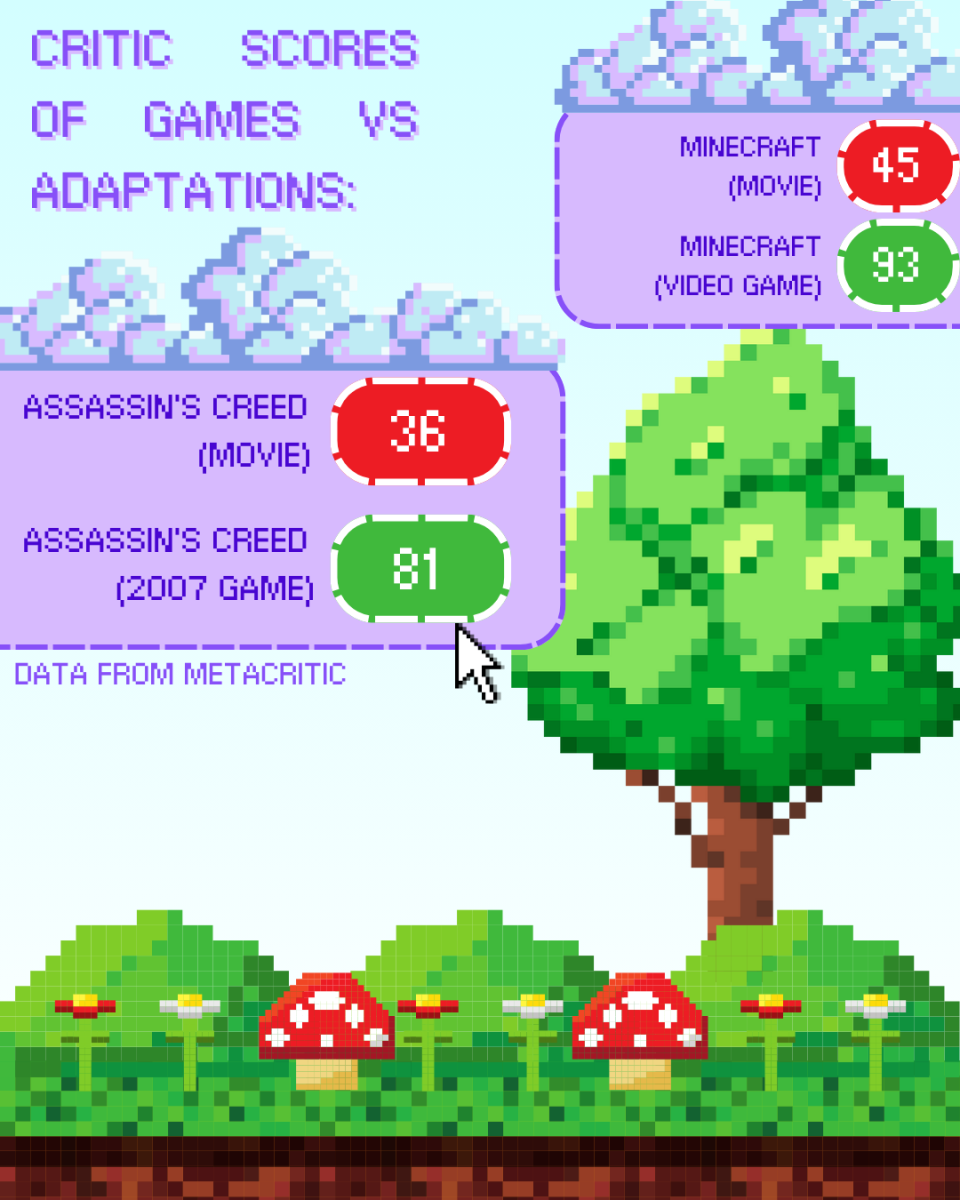The excitement of a video game doesn’t always translate to the big screen, but this is entirely preventable. The poor reception of many video game adaptations can be mediated by understanding the genres’ inherent contradictions.
“Arcane,” the Netflix TV show adaptation of the multiplayer tower defense game League of Legends, sits at a 100% critic score on Rotten Tomatoes–contrary to its source material. “Arcane” is a masterpiece of animation produced by French animation studio Fortiche; unique for its distinct style that combines 3D and 2D animation elements. The audience reception however is a mixed bag and appears to be often dependent on their introduction to “Arcane.”

League of Legends players tended to point out the plot changes, or vaguely stated that the show wasn’t an accurate reflection of the game. “Arcane” changed several character designs, and the backstories of multiple major characters. One of the “Arcane” protagonists, Vi, is a playable character in League of Legends, who in-game, had a backstory wrapped in mystery, as she had forgotten her childhood. The game featured vague hints that fans could piece together, which led to several popular theories. Meanwhile, in “Arcane,” her backstory was nothing like the hints suggested, and the show entirely scrapped her memory loss.
Part of this may be attributed to the fact League of Legends is a multiplayer game without a linear storyline; the lore is scattered around cutscenes, as well as character and item descriptions. The game also has a variety of champions, or playable characters, and regions, while “Arcane” focuses on one specific area with a handful of champions. In fact, all the main villains are exclusively “Arcane” characters; only morally gray or background antagonists are featured in League of Legends.
If anything, “Arcane” is held back by its source material. In a game that features a multitude of individual characters with different themes and backgrounds, it’s difficult to compile it all into one show even if the characters are of similar origin. “Arcane” had to change a multitude of character backstories to properly execute its envisioned themes. In season 2, the characters’ storylines begin to align with the game, which felt like an abrupt halt to the continuity of the show. “Arcane” had evolved the champions beyond their role in the games, only to revert the changes.
Part of what makes video game adaptations so difficult to get right is the way video games are structured. The games in the Fallout series are open world RPGs that are story-heavy games with a well-crafted common theme; these factors removed the obstacles seen in “Arcane.” The Netflix adaptation “Fallout” had a critic score of 94%, an audience score of 92% and received 15 Emmy nominations. The TV show was a hit among both fans and viewers who had never heard of the game. Video games without a story layout like the Fallout series are instead left to choose between appealing to fans or being objectively good.
The Five Nights at Freddy’s (FNAF) franchise revolves around a series of survival horror games; it is notorious for its confusing and often contradicting lore, but also for the vibrant fan culture that shaped the game for many. The movie adaptation of the same name was highly anticipated by fans of the game, and the numbers prove it was a major success among them, with an 86% audience score; though, the critics don’t seem to agree, placing the movie at 32%. The movie was simply catering to the fans, despite the lore changes, it still was loaded with references and focused on replicating the atmosphere of the games.
In one of the few scenes that had no relation to the games, the main character was speaking to his aunt and her lawyer at a diner. Matpat, a popular video essayist in the FNAF community, made a cameo as the waiter. This cameo was objectively poorly done; while it would be caught by fans, it comes off as awkward and confusing otherwise. It didn’t serve any comedic or plot value, rather Matpat simply referenced a popular phrase seen in his FNAF videos. It’s as if the movie is repeatedly pointing to the namesake and reputation of the games, rather than trying to do anything of substance.
The movie is not only difficult to understand without the context of the games, but seems more like an alternate universe continuation rather than the standalone film it tries to be. The crux of the movie is supposed to be the reveal of the “man behind the slaughter,” William Afton, however, it is formatted almost like a catchphrase, as it relies on the excitement the name brings to fans of the game.
“Five Nights at Freddy’s” had the potential to be a good movie. The protagonist, played by Josh Hutcherson, had a very compelling and original character conflict that kept the themes of the games. Many of the characters brought a spin that strayed just the right amount from the FNAF games to make it interesting to fans without betraying its origins. Which is why it is such a detriment to have the movie to resort to what it ultimately came across as: insecure of its standalone value, compensating by shouting references to keep fans of the franchise entertained.







